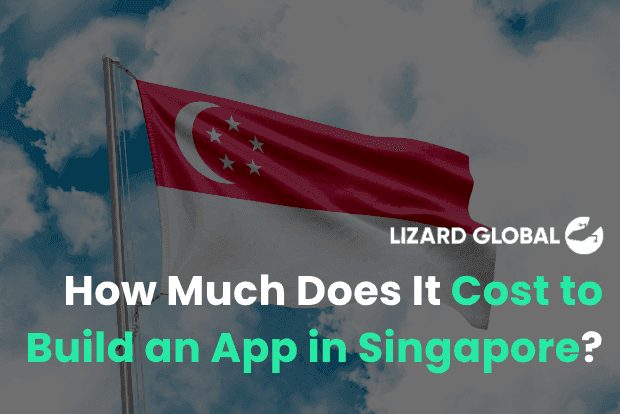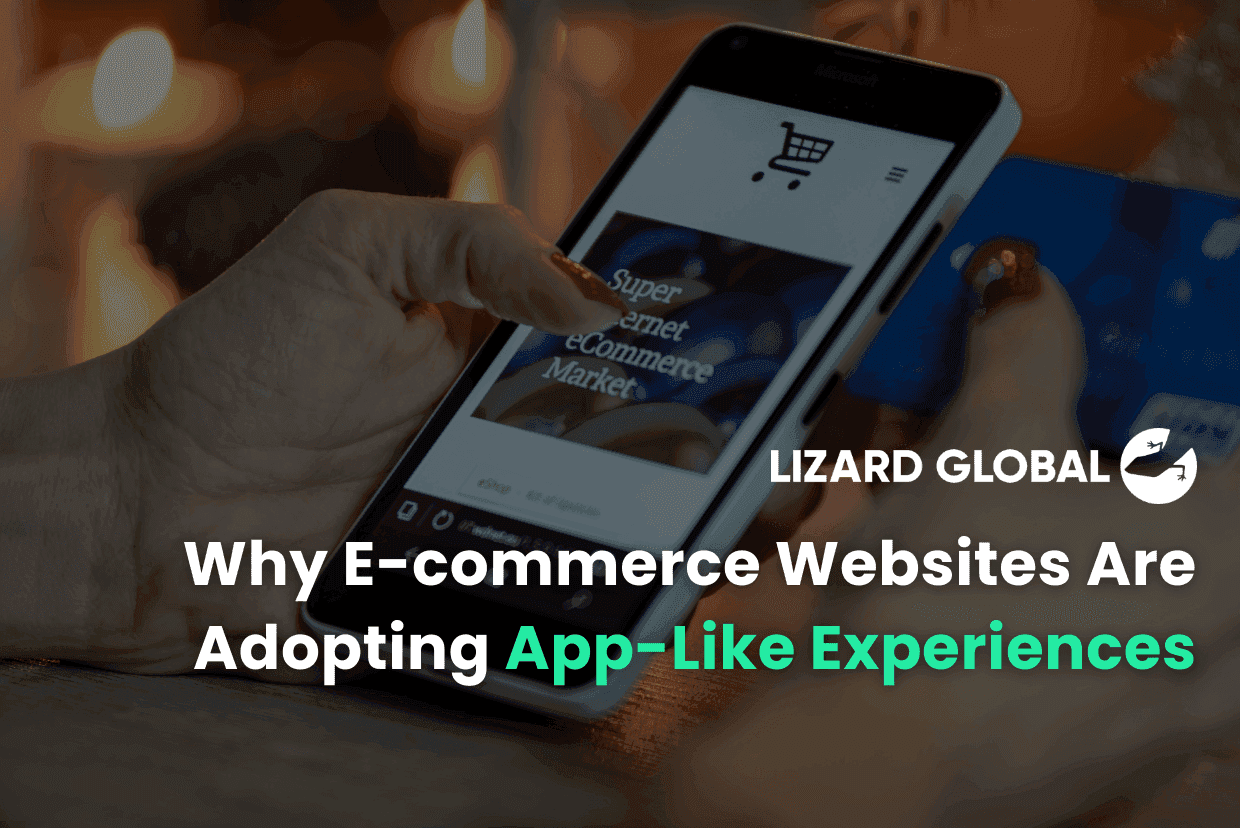SaaS
Software as a Service
+ 3 more ...
SaaS Pricing Strategy For Your Application in 2025
07 Aug 2025
by Jeremy Raes, CEO & Co-Founder, Editor - Nadiy, Senior Content Writer
07 Aug 2025
by Jeremy Raes, CEO & Co-Founder, Editor - Nadiy, Senior Content Writer
SaaS
Software as a Service
Pricing
Software Development
Mobile App Development
SaaS Pricing Strategy For Your Application in 2025
Table of contents
Contact us
We will get back to you in the next 48 hours.

SaaS Pricing Strategy for Your Application in 2025
Pricing your SaaS app isn’t just about picking a number—it’s a strategic decision that can make or break your business. In this comprehensive 2025 guide, discover modern SaaS pricing strategies, from value-based pricing and customer segmentation to tiered models and revenue optimization. If you're building or scaling a SaaS product, this article will help you turn pricing into a growth engine.
key takeaways
In 2025, having a high-performing, feature-rich application is no longer enough. The difference between a product that grows profitably and one that struggles often comes down to pricing. While many founders pour months into development, they spend only a fraction of that time thinking about how to price their application strategically.
Yet, a mere 1% improvement in pricing can result in an 11% boost in profits. That’s the kind of ROI that beats most marketing efforts.
This blog will walk you through modern pricing strategies tailored to today's SaaS landscape, from segmentation to value-based pricing, to help you build a revenue engine—not just a product.
Why SaaS Pricing Is More Complicated Than It Looks
Most new SaaS (Software as a Service) founders believe pricing is a simple exercise: calculate costs, add margin, done. But real-world pricing involves multiple layers of complexity, from understanding customer psychology to choosing the right pricing metric.
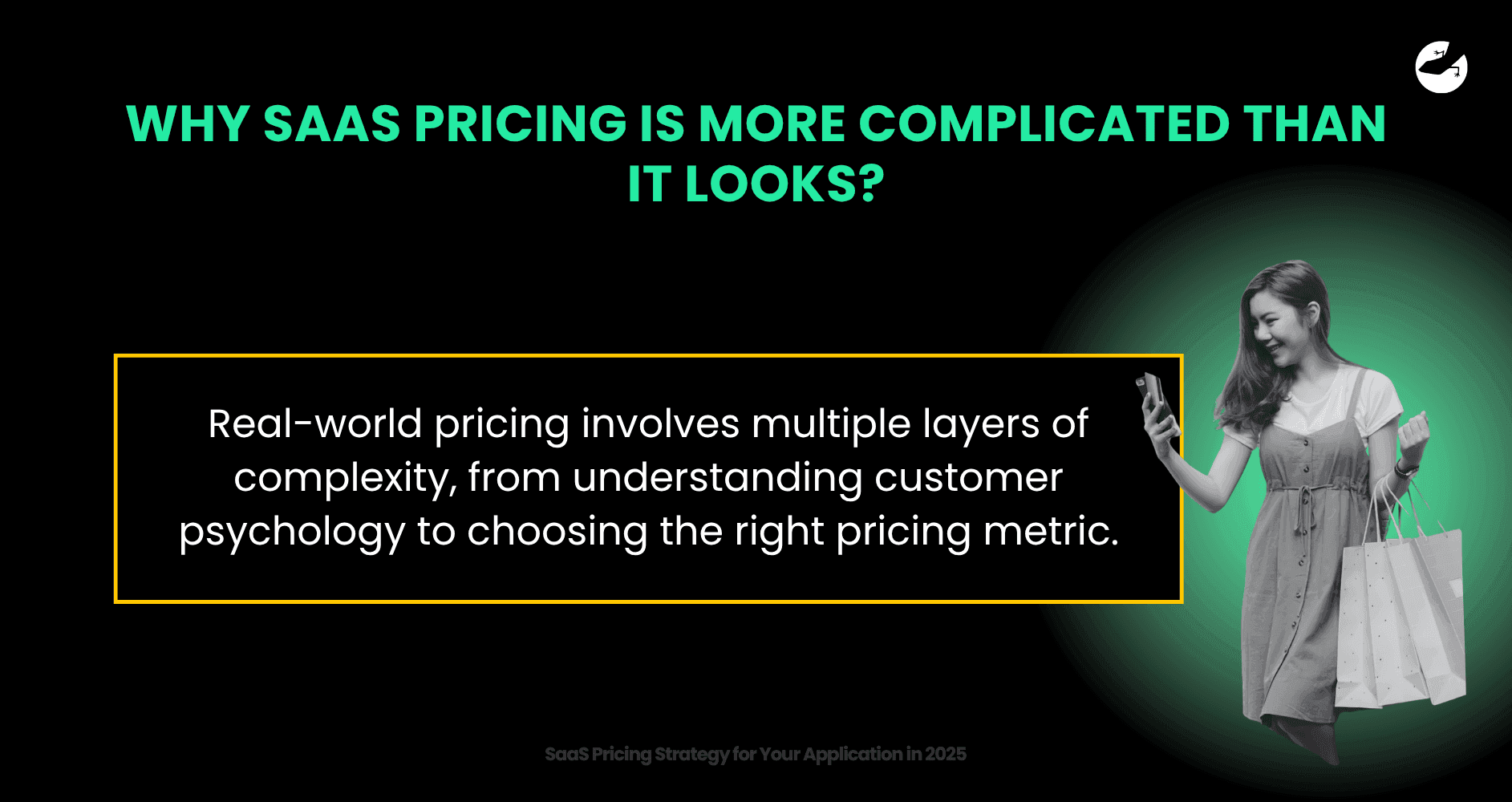
Customers don’t always tell the truth about what they’re willing to pay. Price-sensitive users will always ask for discounts, while enterprise buyers often say nothing—but request features that indicate you're undercharging.
On top of that, pricing feedback loops are slow. You might not realize you're underpricing for months—until churn starts to rise or your enterprise pipeline stalls.
The Rise of Value-Based Pricing Models
The old "cost-plus" approach is fading. In 2025, the leading SaaS companies are pricing based on customer value, not production costs.
What is Value-Based Pricing?
It means setting your price in relation to the actual benefits your users gain—not just your expenses. Instead of asking, “What did this cost to build?”, you ask, “What is this worth to the user?”
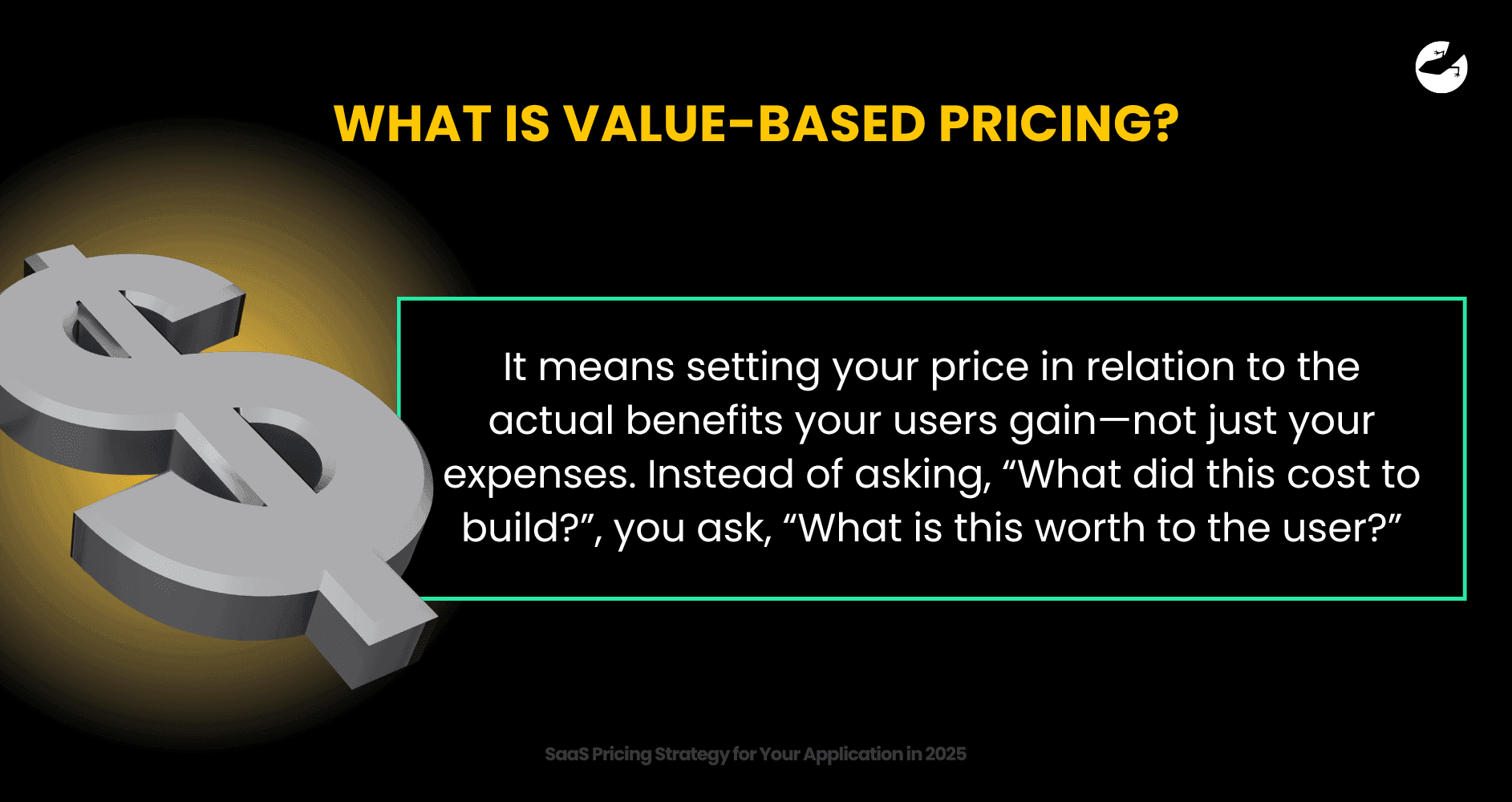
This method not only captures more revenue but aligns your product roadmap with user success. Tools like usage-based billing, tiered features based on customer personas, and solution-based packaging now dominate high-performing SaaS models.
Avoid the Trap of Pricing for the “Average” Customer
Every market has three types of buyers:
- “Rich” enterprise clients who need advanced capabilities and are willing to pay for them
- The “Middle” majority who are price-conscious but ready to scale
- “Poor” price-sensitive users who want only the essentials
A one-size-fits-all price alienates at least two of these segments. Instead, design flexible pricing tiers that capture value across the full spectrum.
Companies like HubSpot and Mailchimp master this by offering clear upgrade paths, ensuring that no matter where a user starts, there’s a logical next step based on usage and value.
Want to find out how much it costs to build your dream app or web app?
The SaaS Paradox: Zero Marginal Cost, High Perceived Value
Unlike physical goods, software has a unique economic profile. It costs virtually nothing to serve your next user—yet your software may deliver massive value.
This paradox tempts many founders to offer low or freemium pricing. While that may attract early users, it’s risky. You may struggle to monetize later if customers are anchored to “cheap” from the start.
Instead, you must price for value outcomes, not cost. Salesforce, Adobe, and Shopify charge premium rates—not because of high costs—but because they solve big problems.
Building a Tiered Pricing Strategy That Scales
A tiered pricing strategy remains the most effective way to monetize SaaS across customer segments.

Here’s how to get it right in 2025:
- Segment based on value, not features: Identify what different customers actually need and build plans around those needs.
- Use upgrade moments: Place key features at points where users naturally experience success.
- Incorporate value psychology: Techniques like anchoring, decoy pricing, and bundling guide users toward your ideal plan.
The most successful SaaS companies avoid feature gating that feels punitive. Instead, they design pricing that reflects user success and encourages growth.
Choosing the Right Pricing Metric
Per-user pricing is no longer the default. The best pricing metric is the one that aligns with how your customer receives value.
Examples of modern metrics:
- Twilio: API calls
- Intercom: People reached
- Snowflake: Compute usage
- Slack: Active users, not just seats
A hybrid pricing model—base fee + usage—is increasingly popular. But it’s essential to monitor usage visibility and prevent “bill shock” with clear caps and notifications.
Your pricing should grow alongside your customer’s success, creating mutual incentives for expansion.
The Land-and-Expand Model: When It Works—and When It Doesn’t
The land-and-expand model has become a SaaS buzzword. But it only works under specific conditions:
- Low acquisition costs
- Natural internal virality
- Easy onboarding
- Clear upgrade paths
If your CAC (Customer Acquisition Cost) is high or expansion isn't organic, this model could bleed cash. Instead, some companies are shifting toward hybrid models: modest upfront fees + value-driven upgrades.
Smart SaaS teams build upgrade logic into their product journeys, so upsells happen naturally—aligned with user milestones.
Designing “First-Class” Experiences With Tiered Value
Your goal with pricing tiers isn’t to limit functionality arbitrarily—it’s to create differentiated experiences. Think airlines: same destination, different comfort levels.
Your premium customers aren’t just paying for features—they’re paying for experience:
- Faster support
- Dedicated success managers
- Security features
- Advanced integrations
Free and entry-level tiers should still provide real value, with clear indicators of how users benefit from upgrading. Notion, for example, delivers exceptional solo features for free, but teams naturally graduate to paid plans.
How to Implement, Test, and Evolve Your Pricing Strategy
Launching a pricing strategy is not the end—it’s just the beginning. The best SaaS companies treat pricing as an iterative process.
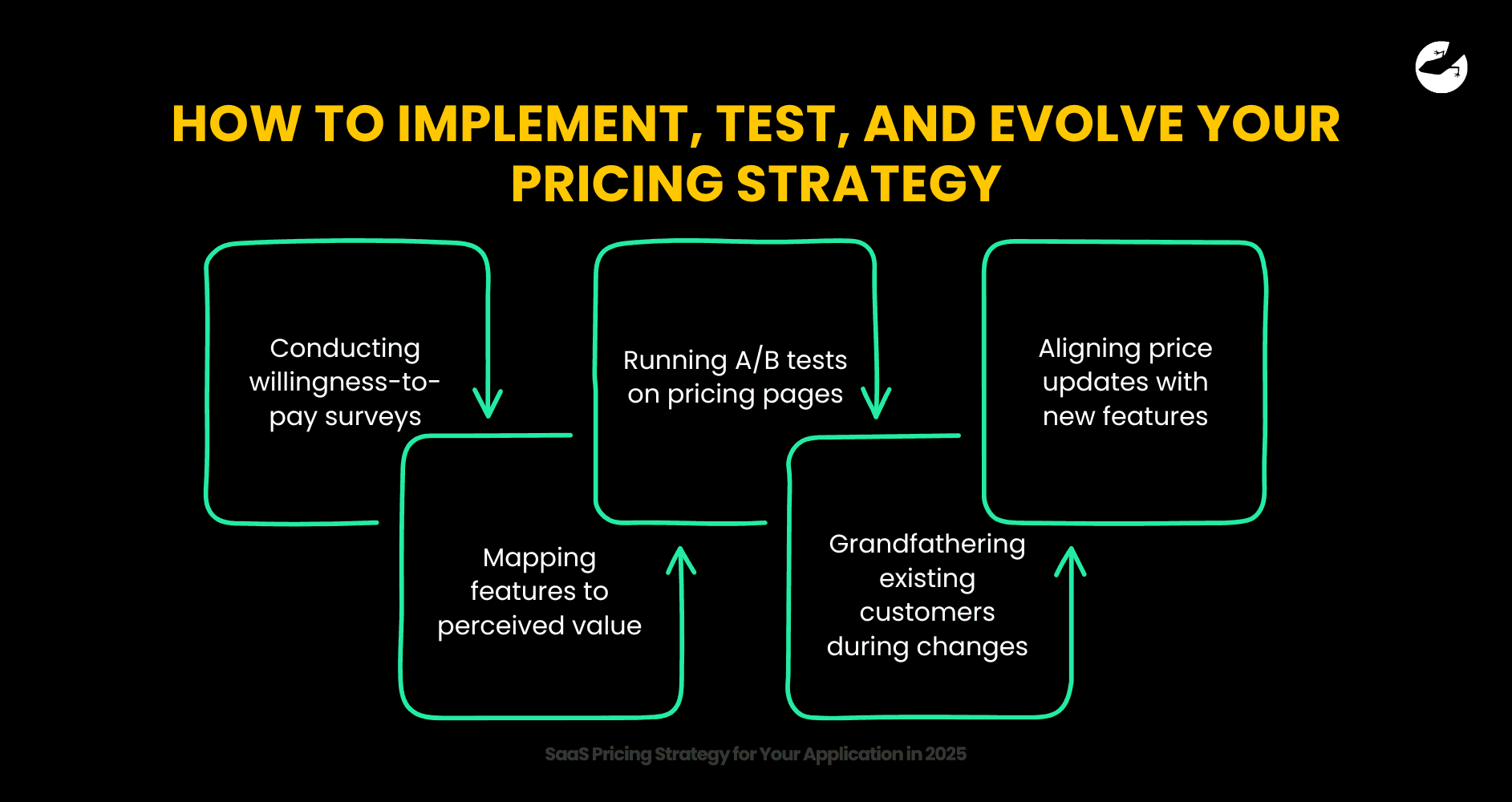
Best practices include:
- Conducting willingness-to-pay surveys
- Mapping features to perceived value
- Running A/B tests on pricing pages
- Grandfathering existing customers during changes
- Aligning price updates with new features
Data is your best tool. Measure changes in CAC, LTV, conversion rates, and churn before making long-term decisions.
How Lizard Global Helps You Design Your Winning SaaS Pricing Strategy
At Lizard Global, we don’t just build applications—we help you bring them to market with success in mind. Pricing is a core pillar of that.

Here’s how we support our clients:
- Four Fit Model integration: We align your pricing with product-market fit, problem-solution fit, and business model fit.
- Customer segmentation and persona mapping
- Value-based pricing structures tailored to your app
- Built-in analytics dashboards for real-time pricing insights
- Iterative A/B testing frameworks
- Freemium and tier design optimized for conversions
Most importantly, we don’t charge extra for pricing support. It’s included with every application we develop because we believe pricing strategy is as critical as the code itself.

Stop Undervaluing Your SaaS Product
Today, the winners in the SaaS world won’t be those with the most features—they’ll be the ones who package and price their solutions effectively.
Pricing is not just a business decision—it’s a growth lever. With the right structure, strategy, and ongoing iteration, your pricing model can become a revenue engine that scales with your users.
Don’t leave money on the table. Partner with Lizard Global to design a SaaS pricing strategy that reflects the full value of your product, your brand, and your vision.
Ready to level up your pricing model? Explore our customer success stories and reach out to see how we can help you price smarter, grow faster, and scale sustainably.
Join 2000+ subscribers
Stay in the loop with everything you need to know

SaaS Pricing Strategy for Your Application in 2025
Pricing your SaaS app isn’t just about picking a number—it’s a strategic decision that can make or break your business. In this comprehensive 2025 guide, discover modern SaaS pricing strategies, from value-based pricing and customer segmentation to tiered models and revenue optimization. If you're building or scaling a SaaS product, this article will help you turn pricing into a growth engine.
In 2025, having a high-performing, feature-rich application is no longer enough. The difference between a product that grows profitably and one that struggles often comes down to pricing. While many founders pour months into development, they spend only a fraction of that time thinking about how to price their application strategically.
Yet, a mere 1% improvement in pricing can result in an 11% boost in profits. That’s the kind of ROI that beats most marketing efforts.
This blog will walk you through modern pricing strategies tailored to today's SaaS landscape, from segmentation to value-based pricing, to help you build a revenue engine—not just a product.
Why SaaS Pricing Is More Complicated Than It Looks
Most new SaaS (Software as a Service) founders believe pricing is a simple exercise: calculate costs, add margin, done. But real-world pricing involves multiple layers of complexity, from understanding customer psychology to choosing the right pricing metric.

Customers don’t always tell the truth about what they’re willing to pay. Price-sensitive users will always ask for discounts, while enterprise buyers often say nothing—but request features that indicate you're undercharging.
On top of that, pricing feedback loops are slow. You might not realize you're underpricing for months—until churn starts to rise or your enterprise pipeline stalls.
The Rise of Value-Based Pricing Models
The old "cost-plus" approach is fading. In 2025, the leading SaaS companies are pricing based on customer value, not production costs.
What is Value-Based Pricing?
It means setting your price in relation to the actual benefits your users gain—not just your expenses. Instead of asking, “What did this cost to build?”, you ask, “What is this worth to the user?”

This method not only captures more revenue but aligns your product roadmap with user success. Tools like usage-based billing, tiered features based on customer personas, and solution-based packaging now dominate high-performing SaaS models.
Avoid the Trap of Pricing for the “Average” Customer
Every market has three types of buyers:
- “Rich” enterprise clients who need advanced capabilities and are willing to pay for them
- The “Middle” majority who are price-conscious but ready to scale
- “Poor” price-sensitive users who want only the essentials
A one-size-fits-all price alienates at least two of these segments. Instead, design flexible pricing tiers that capture value across the full spectrum.
Companies like HubSpot and Mailchimp master this by offering clear upgrade paths, ensuring that no matter where a user starts, there’s a logical next step based on usage and value.
Want to find out how much it costs to build your dream app or web app?
The SaaS Paradox: Zero Marginal Cost, High Perceived Value
Unlike physical goods, software has a unique economic profile. It costs virtually nothing to serve your next user—yet your software may deliver massive value.
This paradox tempts many founders to offer low or freemium pricing. While that may attract early users, it’s risky. You may struggle to monetize later if customers are anchored to “cheap” from the start.
Instead, you must price for value outcomes, not cost. Salesforce, Adobe, and Shopify charge premium rates—not because of high costs—but because they solve big problems.
Building a Tiered Pricing Strategy That Scales
A tiered pricing strategy remains the most effective way to monetize SaaS across customer segments.

Here’s how to get it right in 2025:
- Segment based on value, not features: Identify what different customers actually need and build plans around those needs.
- Use upgrade moments: Place key features at points where users naturally experience success.
- Incorporate value psychology: Techniques like anchoring, decoy pricing, and bundling guide users toward your ideal plan.
The most successful SaaS companies avoid feature gating that feels punitive. Instead, they design pricing that reflects user success and encourages growth.
Choosing the Right Pricing Metric
Per-user pricing is no longer the default. The best pricing metric is the one that aligns with how your customer receives value.
Examples of modern metrics:
- Twilio: API calls
- Intercom: People reached
- Snowflake: Compute usage
- Slack: Active users, not just seats
A hybrid pricing model—base fee + usage—is increasingly popular. But it’s essential to monitor usage visibility and prevent “bill shock” with clear caps and notifications.
Your pricing should grow alongside your customer’s success, creating mutual incentives for expansion.
The Land-and-Expand Model: When It Works—and When It Doesn’t
The land-and-expand model has become a SaaS buzzword. But it only works under specific conditions:
- Low acquisition costs
- Natural internal virality
- Easy onboarding
- Clear upgrade paths
If your CAC (Customer Acquisition Cost) is high or expansion isn't organic, this model could bleed cash. Instead, some companies are shifting toward hybrid models: modest upfront fees + value-driven upgrades.
Smart SaaS teams build upgrade logic into their product journeys, so upsells happen naturally—aligned with user milestones.
Designing “First-Class” Experiences With Tiered Value
Your goal with pricing tiers isn’t to limit functionality arbitrarily—it’s to create differentiated experiences. Think airlines: same destination, different comfort levels.
Your premium customers aren’t just paying for features—they’re paying for experience:
- Faster support
- Dedicated success managers
- Security features
- Advanced integrations
Free and entry-level tiers should still provide real value, with clear indicators of how users benefit from upgrading. Notion, for example, delivers exceptional solo features for free, but teams naturally graduate to paid plans.
How to Implement, Test, and Evolve Your Pricing Strategy
Launching a pricing strategy is not the end—it’s just the beginning. The best SaaS companies treat pricing as an iterative process.

Best practices include:
- Conducting willingness-to-pay surveys
- Mapping features to perceived value
- Running A/B tests on pricing pages
- Grandfathering existing customers during changes
- Aligning price updates with new features
Data is your best tool. Measure changes in CAC, LTV, conversion rates, and churn before making long-term decisions.
How Lizard Global Helps You Design Your Winning SaaS Pricing Strategy
At Lizard Global, we don’t just build applications—we help you bring them to market with success in mind. Pricing is a core pillar of that.

Here’s how we support our clients:
- Four Fit Model integration: We align your pricing with product-market fit, problem-solution fit, and business model fit.
- Customer segmentation and persona mapping
- Value-based pricing structures tailored to your app
- Built-in analytics dashboards for real-time pricing insights
- Iterative A/B testing frameworks
- Freemium and tier design optimized for conversions
Most importantly, we don’t charge extra for pricing support. It’s included with every application we develop because we believe pricing strategy is as critical as the code itself.

Stop Undervaluing Your SaaS Product
Today, the winners in the SaaS world won’t be those with the most features—they’ll be the ones who package and price their solutions effectively.
Pricing is not just a business decision—it’s a growth lever. With the right structure, strategy, and ongoing iteration, your pricing model can become a revenue engine that scales with your users.
Don’t leave money on the table. Partner with Lizard Global to design a SaaS pricing strategy that reflects the full value of your product, your brand, and your vision.
Ready to level up your pricing model? Explore our customer success stories and reach out to see how we can help you price smarter, grow faster, and scale sustainably.
Join 2000+ subscribers
Stay in the loop with everything you need to know
FAQs

What is the best pricing model for a SaaS application?
How do I choose the right SaaS pricing metric?
What are common mistakes in SaaS pricing?
Should I offer a freemium tier for my SaaS product?
How do successful SaaS companies structure their pricing tiers?
similar reads

